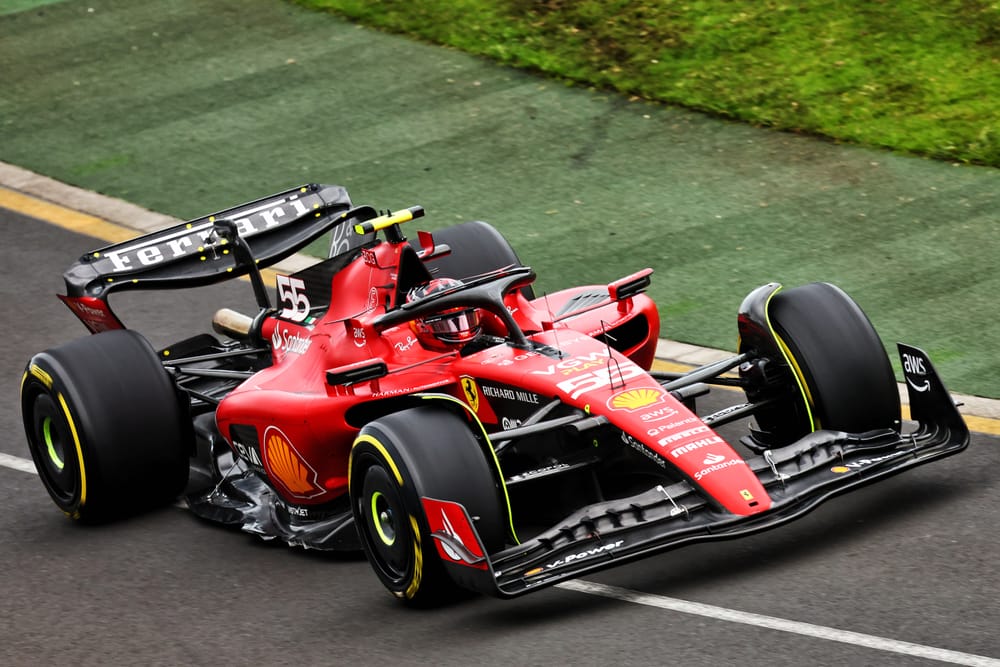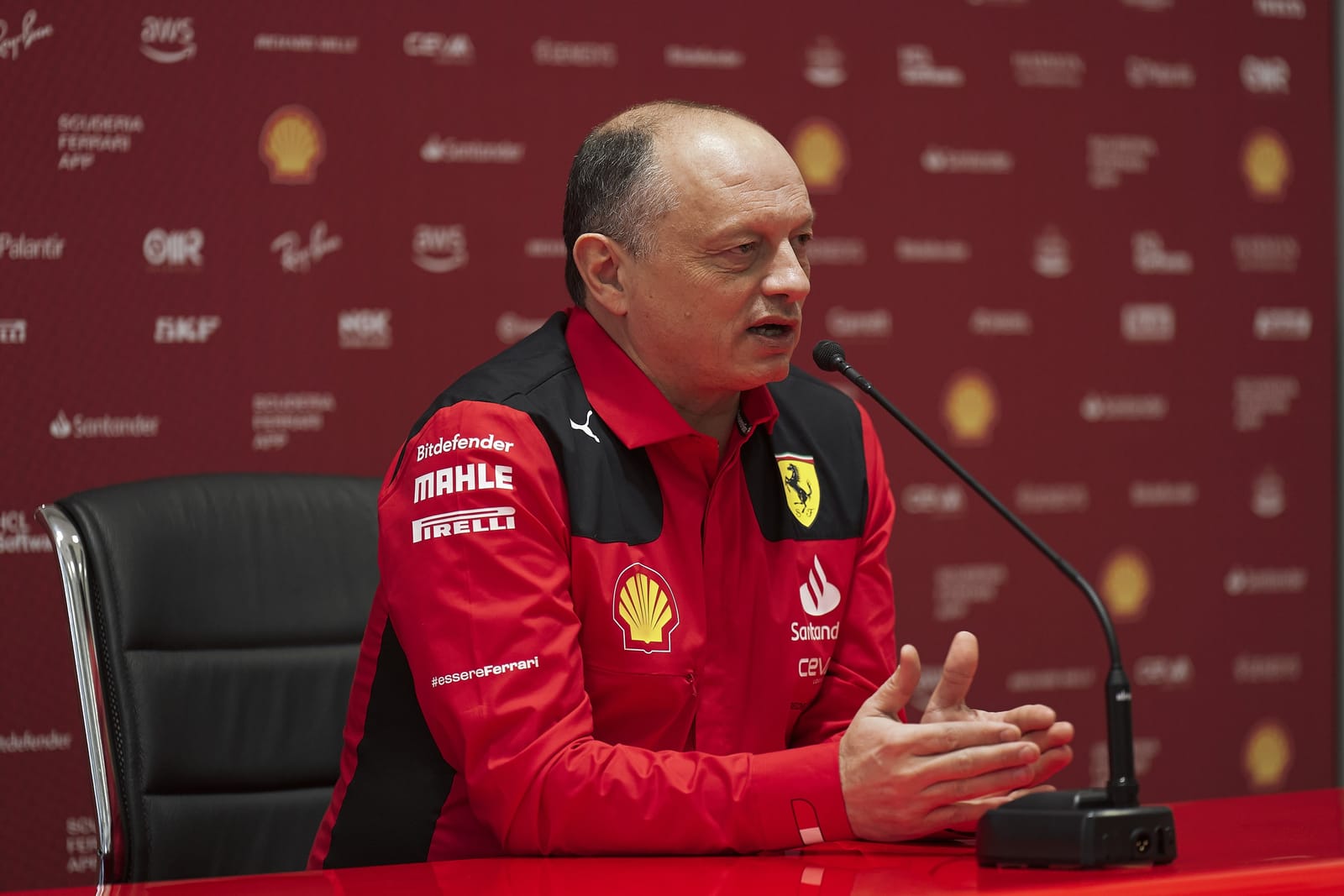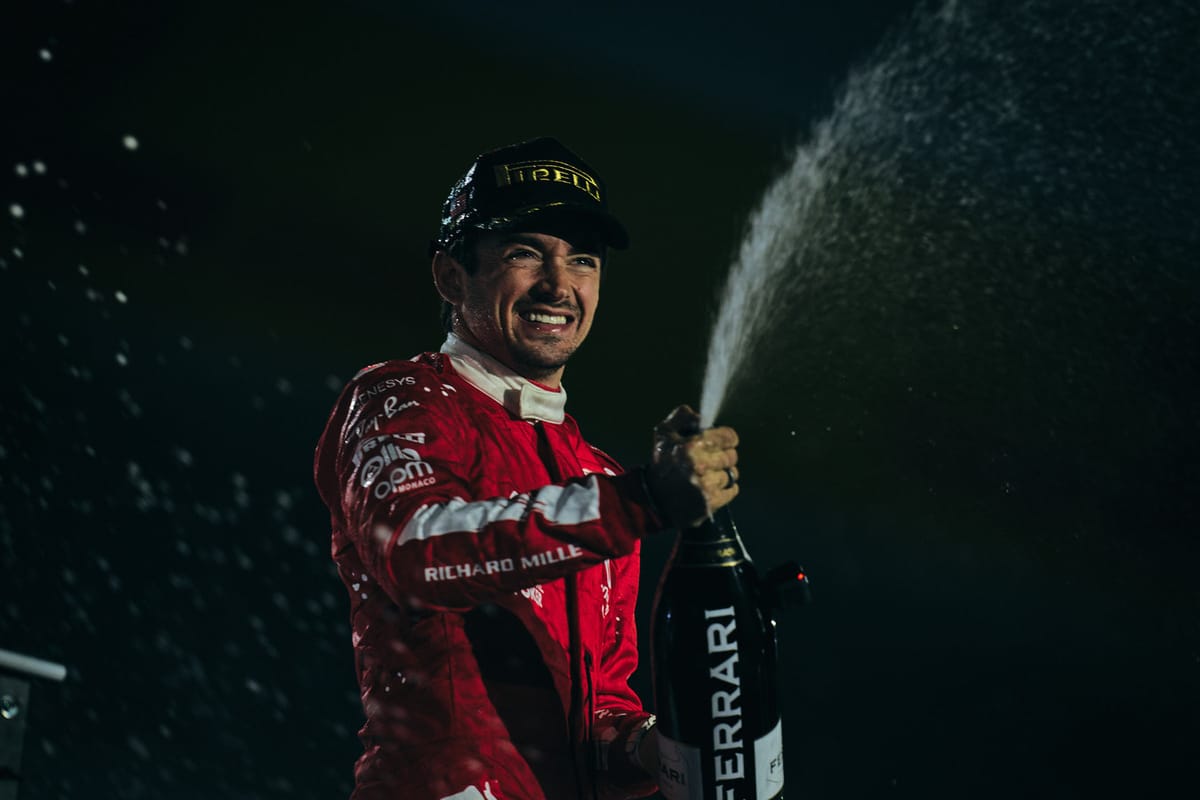Up Next

Ferrari came into the season with serious title aspirations, based upon its performance in 2022. It took only a few hours of pre-season testing for it to understand those aspirations were unrealistic, so far had Red Bull moved the goalposts.
Judged against the Red Bull RB19, the Ferrari SF23 was of course a disappointment.
Even though it did score the only non-Red Bull victory of the season and allowed Charles Leclerc and Carlos Sainz between them to take six poles, its concept – based heavily upon that of the 2022 car – proved to have a much lower performance ceiling than that of the very different Red Bull.
Ferrari – just like the rest of F1 – was blindsided by just how much potential was built into the Red Bull’s combination of aerodynamic and suspension platforms.
Ferrari continued with the fat-fronted out-washing sidepod concept which had worked well enough to be fully competitive with Red Bull in the first part of ’22, until the Ferrari PUs were turned down because of an ERS-H problem which couldn’t be fixed until the off-season.
This almost certainly misled the team into believing that with full power restored and some light chassis tweaking, it could take up in ‘23 where it had left off after Baku ’22. Which was to totally underestimate Red Bull’s development potential during that off-season.
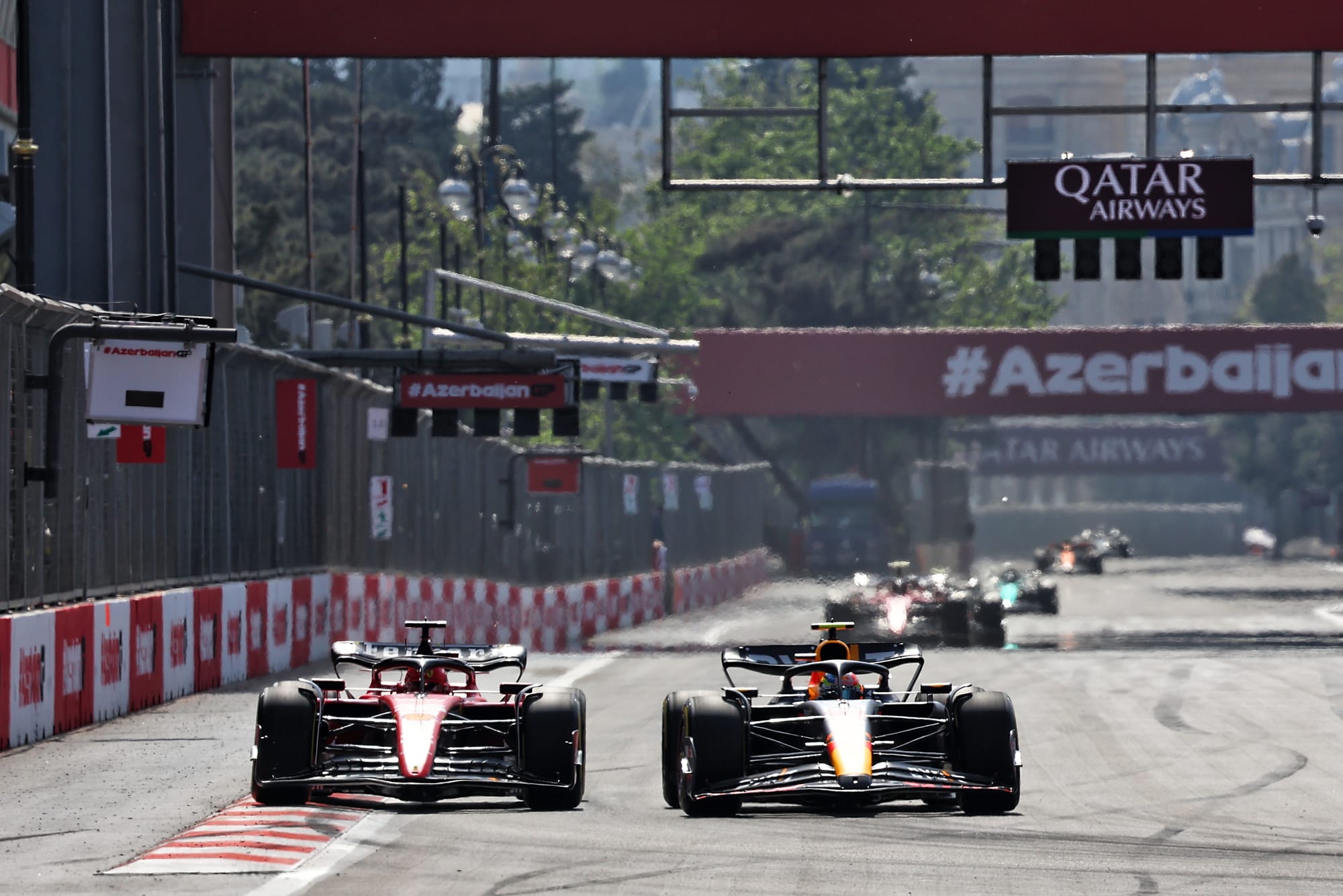
This would likely all have unfolded in exactly the same way regardless of whether the team principal was the departing Mattia Binotto or his replacement Frederic Vasseur. It was defined by hardware – and the out-washing concept essentially ran out of airflow.
As Ferrari attempted to squeeze more aero load from that out-washing, the airflow could no longer adequately feed both the underfloor and the floor sides, leading to a suspected sudden detachment at high speeds which gave the car an unpredictable rear-end snappiness in fast corners. Particularly in crosswinds.
“It was down to the shape of the aero map,” explains technical director Enrico Cardile. “Intrinsically every F1 car when you apply yaw loses downforce. It’s related to tyre wake management.
"The problem is how much do you lose? The wind is an amplifier of the yaw. So the more you lose in yaw, the more you’ll suffer from wind. Related to this is the driver confidence and how peaky the performance is.
"With the right condition, you have more performance but a certain type of corner with the wind, the driver doesn’t know when the gust will happen, which type of corner.”
The fat-fronted sidepods of this concept are there to direct the wake of the front tyres outwards, well away from the car, to be pulled back in ahead of the rear tyres by the low-pressure area between the wheels and diffuser.
Without the undercut in the pods beneath the radiator inlets, the air is not accelerated along the floor edges with as much force as on the more classic Red Bull-type design. But that flow should at least be very clean, unaffected by the front wheel wake.
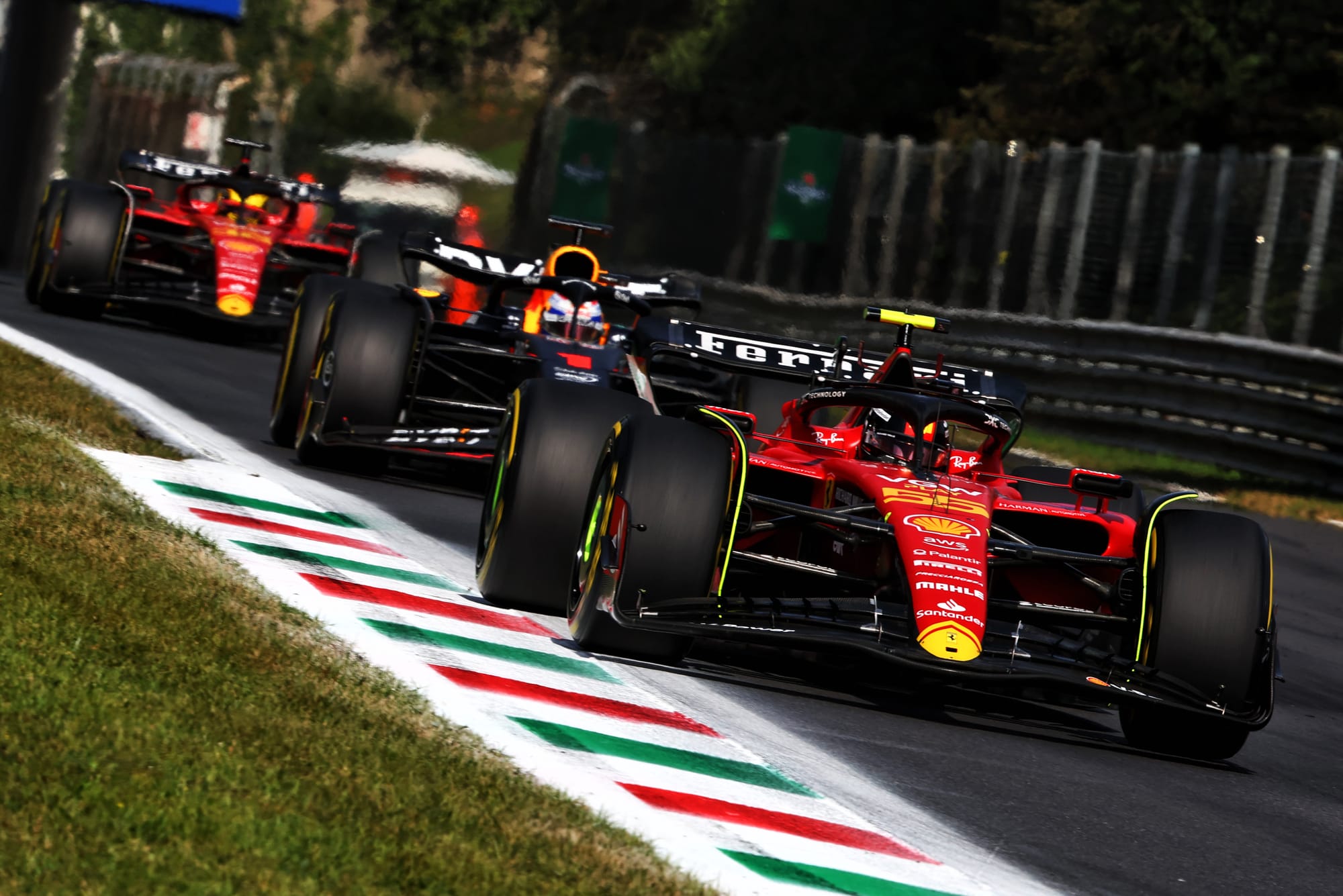
“The ’22 car was developed following a certain concept in terms of general target for development,” says Cardile, “and the shape of the car is just a consequence of what you want to achieve.
"The ’23 car was developed in continuity with the ’22 car but trying to improve some limitations of the previous car.
"We achieved our goal in the sense that the car on track behaved exactly as it had been conceived and simulated. The problem was soon we realised – already during Test 1 - the direction we took was not the most performing.”
The main difference between the ’22 and ’23 cars was around the lower front of the sidepod which had been channelled out to allow the tunnel inlets for the underfloor to be placed in a better position. This changed the emphasis from high-speed to medium-speed corner performance and gave the car better straightline speed. In the competitive demands against the ’22 Red Bull that would have been ideal. Against the ’23 Red Bull, it was nowhere near enough.
The hard points of the limitation were hard-wired in because of the chassis shape.
“Yes, the main difference between our car and Red Bull-style car were under the radiator inlet – the pod design was different," adds Cardile.
"Ours was fatter, using this portion of the bodywork to pressurise the area in front of it to control the tyre wake. But below the radiator inlet we are looking at the flow towards the rear end of the car, benefitting in terms of airflow, meaning we have to recover the wake control somewhere else.
“Because we had this ‘border’ [between the out-washed and floor edge flow] we didn’t need to design a very tricky shape chassis and we put the electronics just below the radiator while the lower side-impact bar we positioned at the maximum height allowed by the regs, to have a better design.
"We sought performance from cleaning the top surface of the front. Once you decide that to achieve a different target you need a different shape, these two things - the position of the electronics and the SIS position - became quickly a constraint.”
The first major upgrade to the car came in Barcelona. The sidepods were lengthened and narrowed in an attempt to make that out-washed flow less stall-prone by asking it to make a less extreme arc.
The trait remained and even Leclerc, a driver with a preference for an oversteer balance, found he couldn’t properly commit to fast corners. That trait was behind several incidents for both drivers, notably Leclerc in Miami qualifying.
Further tweaks were made but the car’s form peaked and troughed according to track layout. Generally it was a faster qualifying car than the Mercedes but often slower in the race, both traits probably a consequence of the way each car used its tyres. But Cardile’s team noticed a common discrepancy in the car’s performance at both Barcelona and the Hungaroring, which led it to anticipate the same problem at Zandvoort.
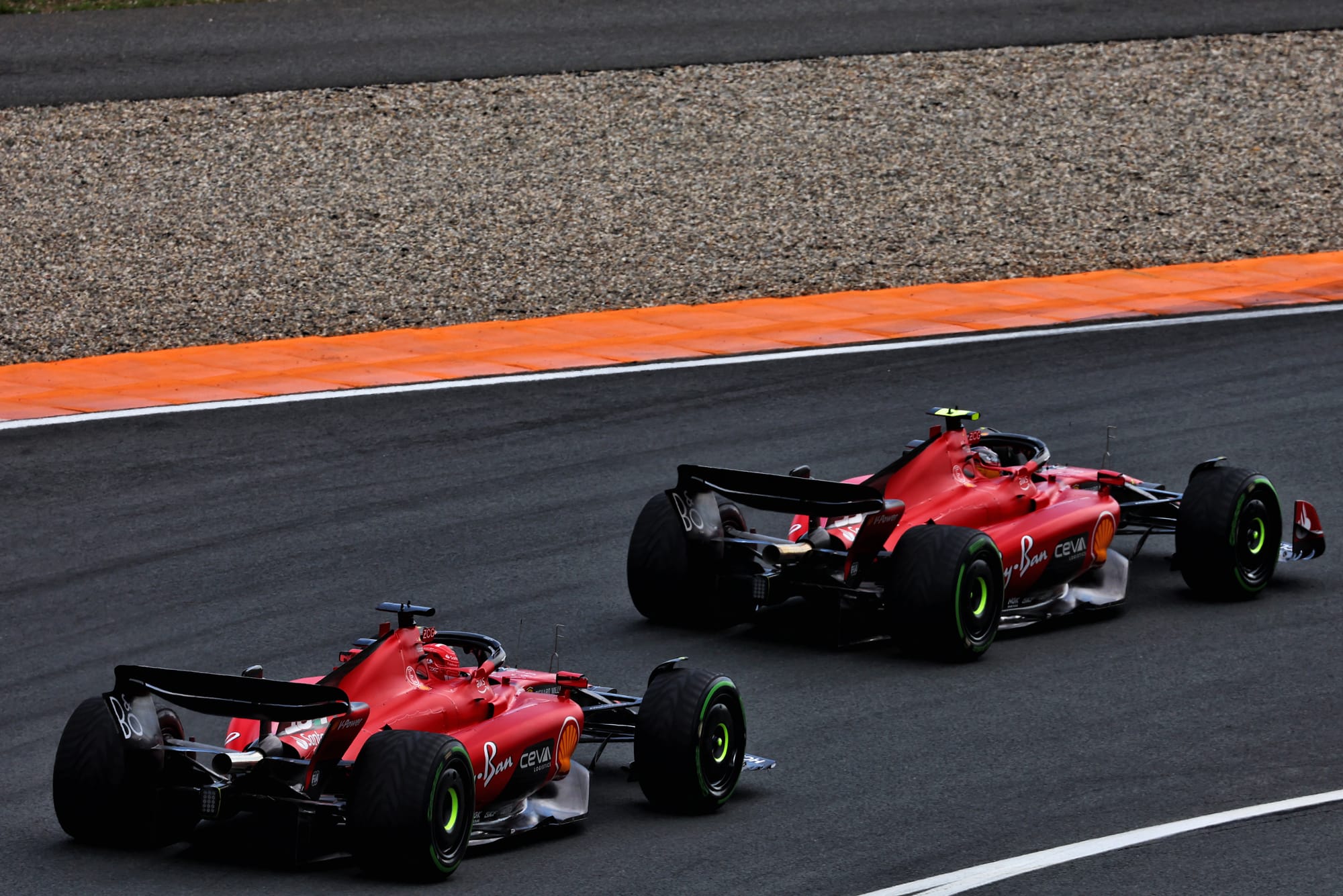
“Because the characteristic disappeared and then reappeared again in Hungary we developed a hypothesis about what was happening at a certain downforce level with certain asphalt characteristics and we thought Zandvoort could be another track with this combination," says Cardile.
"So we did experiments there and achieved a better knowledge of what the car was doing, allowing us to adapt our tools to a more refined understanding of the car. It allowed us to work around some limitations without being caught by surprise.”
In the meantime, Sainz had asked to try out a different set-up which essentially got him around the unpredictable rear by inducing a deliberate understeer. With the car like this, he set consecutive poles at Monza and Singapore, winning the latter event.
At the very next race, Suzuka, Ferrari introduced its final upgrade – a new floor designed to improve the aero efficiency but which brought an unanticipated taming of the rear. No longer needing the compromised set-up, Leclerc re-found his earlier edge and only the unlucky timing of the Las Vegas safety car lost him victory there.
Ultimately the team lost second place in the constructors to Mercedes only on the last lap of the season. The operational errors were still there, but perhaps not quite so glaring as before. On the plus side, the team always seemed to be quicker into the car’s sweet spot at the beginning of a weekend than either Red Bull or Mercedes, something of a boon in Sprint weekends especially.
But all those were second-order factors behind the basic hardpoints of the car. For 2024 Cardile promises a clean sheet. “Next year, we turn the page,” as he says.


